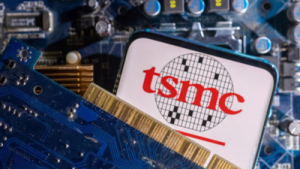As Group Captain Shubhanshu Shukla of India begins his groundbreaking mission to the International Space Station (ISS), let's explore the remarkable orbital facility where he and his Axiom-4 crew will live and conduct research for the next two weeks.
The ISS, orbiting approximately 408 km above Earth, stands as a beacon of international scientific collaboration, exceptional engineering, and humanity's ambition to thrive beyond our planet.

The ISS circles Earth at an astonishing speed of 28,000 kmph, completing a full orbit every 90 minutes, resulting in roughly 16 orbits per day. This allows Shukla and his team to witness multiple sunrises and sunsets daily, suspended in a delicate equilibrium of velocity and gravity that keeps them in perpetual orbit around the Earth.
The ISS, assembled over a decade through 42 separate launch missions, has evolved into a vast space complex. It measures 73 meters in length and, with its solar arrays fully extended, spans 109 meters—exceeding the size of a football field.
With a mass of approximately 4.2 lakh kg, the ISS comprises over 15 pressurized modules, contributed by the five primary partner agencies: NASA (United States), Roscosmos (Russia), ESA (Europe), JAXA (Japan), and CSA (Canada). The central truss, which supports the solar panels and radiators, functions as the station's structural core.
Eight enormous solar arrays generate up to 120 kilowatts of power. This energy is stored in rechargeable batteries to ensure continuous operation. These panels supply power for everything from scientific instruments to essential daily crew requirements, including critical oxygen generation and environmental control systems.
The station typically houses a crew of six, but it can accommodate up to ten astronauts during short-term missions like Ax-4. Life on board is carefully structured: astronauts adhere to a strict schedule, which includes two hours of daily exercise to combat muscle and bone loss caused by weightlessness.
The station includes private sleeping quarters, a galley, toilets, an observation cupola, and exercise equipment. With communication delays limited to just 1-2 seconds, crew members can engage in near real-time conversations with mission control and their families.
The ISS is more than just a residence; it's the most sophisticated research laboratory in low-Earth orbit (LEO). Experiments conducted on board encompass microgravity physics, life sciences, biotechnology, Earth observation, and even space agriculture. One notable feature is the Cupola Module, which provides astronauts with breathtaking panoramic views of Earth through its seven windows. It is used for photography, spacecraft docking supervision, and personal reflection – a favorite spot for many ISS residents.
Transportation to the ISS is currently facilitated by several spacecraft: Soyuz (Russia), Crew Dragon (SpaceX), and soon, Boeing's Starliner. Cargo missions, essential for delivering food, water, scientific equipment, and spare parts, are conducted by spacecraft such as Dragon, Cygnus, HTV, and soon, Dream Chaser.
Expected to remain operational until at least 2030, the ISS will eventually be succeeded by commercial space stations like Axiom Station, Starlab, and others. NASA and Roscosmos are collaborating on a controlled deorbit plan to ensure a safe conclusion to the decades-long mission of this orbiting laboratory.
As Shukla commences his scientific work in space, he joins a facility that not only highlights India's growing prominence in human spaceflight but also represents one of humanity's most significant international achievements. The ISS is not simply a station; it symbolizes a shared frontier where science, diplomacy, and exploration intersect 400 km above Earth.
Newer articles
 Rishabh Pant: Greg Chappell Hails India Star as Cricket Revolutionary
Rishabh Pant: Greg Chappell Hails India Star as Cricket Revolutionary
 Google Maps to Boost Navigation Accuracy with Fused Orientation Provider API
Google Maps to Boost Navigation Accuracy with Fused Orientation Provider API
 Gavaskar Calls for Kuldeep Yadav's Inclusion in Second Test Amid Bumrah Fitness Concerns
Gavaskar Calls for Kuldeep Yadav's Inclusion in Second Test Amid Bumrah Fitness Concerns
 Global Vaccination Rates Plunge: Millions of Children Now Vulnerable to Preventable Diseases
Global Vaccination Rates Plunge: Millions of Children Now Vulnerable to Preventable Diseases
 Skin Cancer Alert: How to Identify Suspicious Moles and Early Warning Signs
Skin Cancer Alert: How to Identify Suspicious Moles and Early Warning Signs
 Suryakumar Yadav's Sports Hernia: Understanding the Injury, Recovery, and Risk Factors for Athletes
Suryakumar Yadav's Sports Hernia: Understanding the Injury, Recovery, and Risk Factors for Athletes
 Ashada Gupt Navratri 2025: Unveiling the Hidden Significance, Dates, and Rituals of the Monsoon Festival
Ashada Gupt Navratri 2025: Unveiling the Hidden Significance, Dates, and Rituals of the Monsoon Festival
 IRCTC Launches AI Chatbot for Seamless Train Ticket Booking, Refunds, and Information Access
IRCTC Launches AI Chatbot for Seamless Train Ticket Booking, Refunds, and Information Access
 TSMC Regains Top 10 Global Company Ranking Amid AI Chip Demand Surge
TSMC Regains Top 10 Global Company Ranking Amid AI Chip Demand Surge
 Vijay Sethupathi Apologizes Amid Controversy Over Son Surya's Debut Film 'Phoenix' and Alleged Video Removal Pressure
Vijay Sethupathi Apologizes Amid Controversy Over Son Surya's Debut Film 'Phoenix' and Alleged Video Removal Pressure